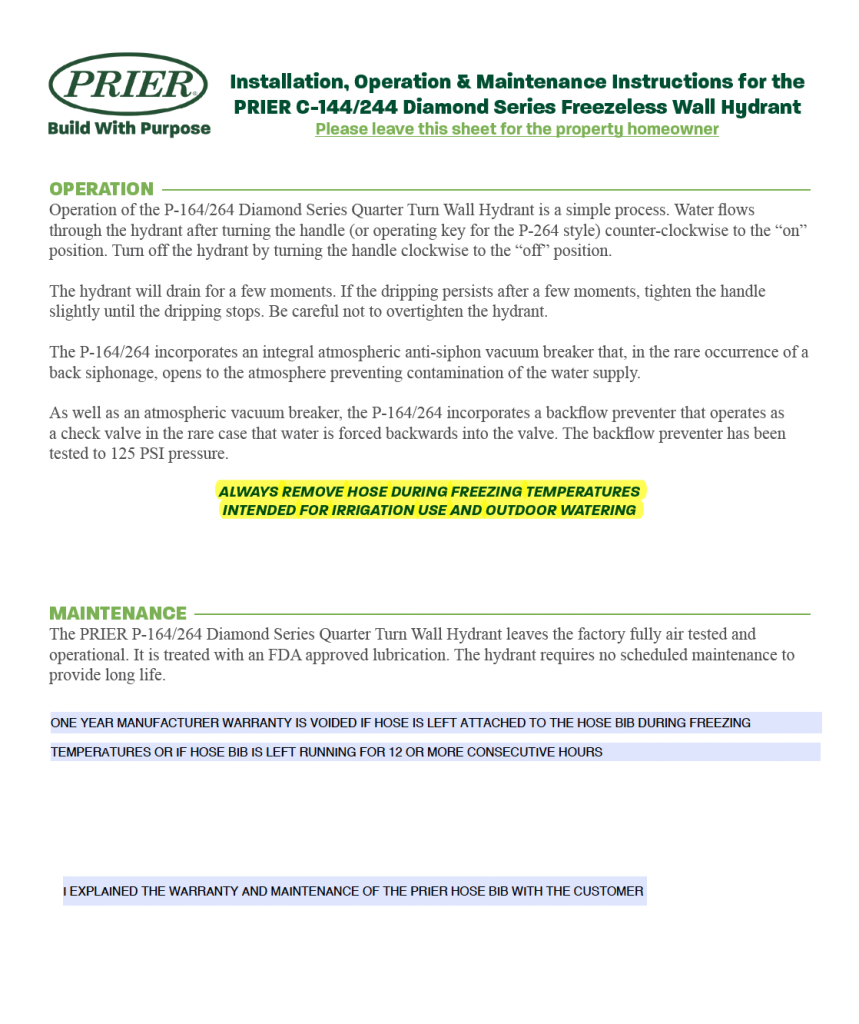Every year around this time we get a ton of calls about people’s outdoor spigots (called hose bibs) leaking or breaking. So, we thought we’d fill you in on the types of hose bibs we install and give you some pointers on how to protect those spigots from becoming damaged over the winter.
We install the best of the best- the Prier P-164n Diamond Series Quarter Turn Wall Hydrant.
PRIER P-164 provides a year-round source of water in areas that are subject to freezing temperatures. The hydrant valve is connected to the supply piping in the heated portion of the structure, eliminating the possibility of freezing. The P-164 has the added benefit of an easy quarter turn operation that features a proven compression type seal. Additionally, the P-164 features a soft grip operating handle for easy operation in wet conditions and cold weather.
What’s great about this product is that it has what’s called a vacuum breaker that prevents any water left in the hose bib from running down into the pipe inside the home and causing cracks to that pipe when it expands and contracts due to freezing. This protects your home from flooding in the spring when you turn on your water.
There are two things you should ALWAYS do to winterize and protect your hose bib. The first is UNHOOK THE HOSE FROM THE HOSE BIB before freezing temperatures hit. Even though these hydrants are frost-free, it doesn’t mean that they are freeze-proof. You need to make sure that your hose is disconnected and water is drained from the spigot (let it all drip out) long before you get freezing temperatures overnight.
Secondly, these residential spigots are not meant to run for extended periods of time. Be sure that you don’t leave the hose running for more than twelve hours.
Below is the information we leave with every single one of our customers and we explain to them the importance of maintaining and caring for their hose bibs.


